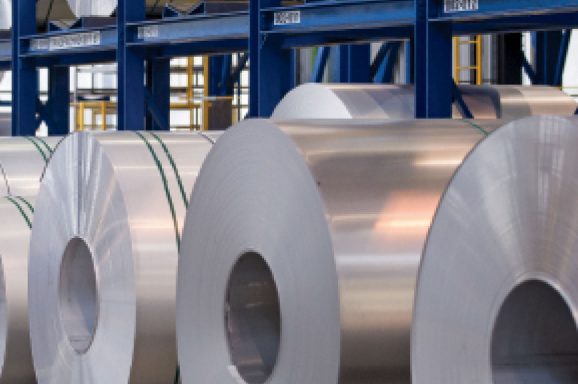Continuous level measurement and level detection in liquids and solids.
What is level measurement ?
The level measurement is about the level of liquids, solids, and powders that exhibit an upper free surface, inside a container or in its natural form. It is detected by level measurement sensors which are divided into two main types;
Point level measurement sensors are used to mark a single discrete liquid height present level condition. Generally, this type of sensor functions as a high alarm, signaling either an overfill or a low-level condition.
Integrated into process control in many industries, level sensors are used to indicate the level in liquids, solids or liquefied gases. They are often measured in tanks, silos or mobile containers.
Continuous level sensors can provide level monitoring of an entire system. They measure fluid level within a range, producing an analog output that directly correlates to the level in the container. additional, to create a level management system, the output signal is linked to a process control loop and to a visual indicator.
There are a large number of measurement principles for level measurement, radiometric level measurement, radar level measurement, ultrasonic level measurement, interface measurement, density measurement, and level detection. We assist you from planning to maintenance of your measuring point, including commissioning.
7 Main Types of Level Measurement instruments – How do they differ?
- OEM Flow Switches
- RF Level Transmitters
- Ultrasonic level transmitter
- Non-Contact Ultrasonic Transmitters
- Contact Ultrasonic Transmitters
- Non-Contact Ultrasonic Level Transmitters
- Radar Level Sensor
These are essential aspects for any level measurement point.

With a wide variety of technology options, Ametek Drexelbrook is qualified to properly evaluate and recommend the best solution for the industrial application.
Its products and services are directly related to the following industries: food processing, oil production, petroleum refining, organic chemicals, and plastics, as well as pharmaceutical plants, beverages, power plants, power plants of cogeneration and the water and wastewater treatment industries.
See the full range of Ametek Drexelbrook level measurement products here.

Level measurement Liquid Level Controllers
SOR Liquid level controllers monitor liquid levels in vessels and send a pneumatic signal to a local control system or directly to a control valve. Liquid level controllers are ideal for interface measurements, making them an excellent choice for measuring the level on gas separators and scrubbers. The reliability of the level measurement instrument design makes it well suited for liquid level applications in natural gas production, compression, and processing.
Level measurement: level Indicators
SOR Level indicators offer a clear and reliable visual indication of most any process liquid level. Designed to work in a wide variety of process conditions, level indicators are perfect for industries such as Oil and Gas, Refining, Power Generation, Petrochemical and more.
SEE-MORE
Level measurement: RF Level Transmitters
SOR RF level switches are used to measure the level of a liquid or bulk solid material (as well as slurries) within a specified space. Level measurement instruments are designed to measure point level readings. Point level switches provide the output when a specific level measurement is reached.
Level measurement: OEM Flow Switches
Vertically mounted, vane-operated flow switches are suitable for plant and OEM applications where open or closed contacts are required to signal flow or no flow conditions. The vane extension arm moves a magnet that actuates (de-actuates) a hermetically sealed reed switch, which is encapsulated in the body of the unit, out of the fluid path. Decreasing the flow below the calibration point causes the reed switch to de-actuate.
LESS-MORE

Intelligent Buoyancy Transmitters and Radar solutions for Level measurement
Radar and Buoyancy Transmitters that provide level measurement solutions in a variety of process applications.
Features
The Foxoboro Level Wave Radar Series provides a universal radar measurement solution for all liquids including corrosive, viscous, sticky and other difficult media such as foam and turbulent surfaces, and solids. Intelligent buoyancy level transmitters are designed to measure liquid level, interface and density under difficult conditions.
SEE-MORE
|
Benefits: Common features include: • High pressure and process temperature: -196 to +500 °C (–320 to +932 °F) • No Moving Parts • Direct Force Measurement • Level, Interface and Density measurements • Rugged designs with high reliability and long life • Low Maintenance Costs Radar • Easy configuration via digital communication • Wide selection of materials facilitates service under harsh/corrosive conditions • Solutions for density/pressure variations and rapid level changes • Empty Tank Spectrum filtering • Quick Noise scanning reduces false radar reflections |
Applications • Steam Generation /Boiler Drum • Oil/Water Separator • BioDiesel Production • Overflow Protection • Interface and Density • Process tanks • Storage tanks • Polyester/Nylon fiber production • Claus Process • Open channel flow (if PACTware™ software tool is used)
• River level |
LESS-MORE

Measurement Instrumentation
Experts in level, volume and flow measurement
Pulsar Process Measurement Ltd manufactures and supplies level, volume, open channel flow, pipe flow, sludge interface measurement and pumps control instrumentation.

- Non-contact and non-intrusive laser measuring instrument.
- Very high performance, very high precision 0.05 m up to 500 m
- Measures up to 65 meters without reflector target.
- Measures distance, level, width, diameter, length and height.
- Resistant to external conditions.
- Possibility of chain mounting

Nuclear level measurement technology has been applied effectively to measure liquids and solids for more than 30 years. the basic method of measuring the nuclear level is the sending of radiation through the liquid and the intensity of the transferred radiation is measured using a detector.




